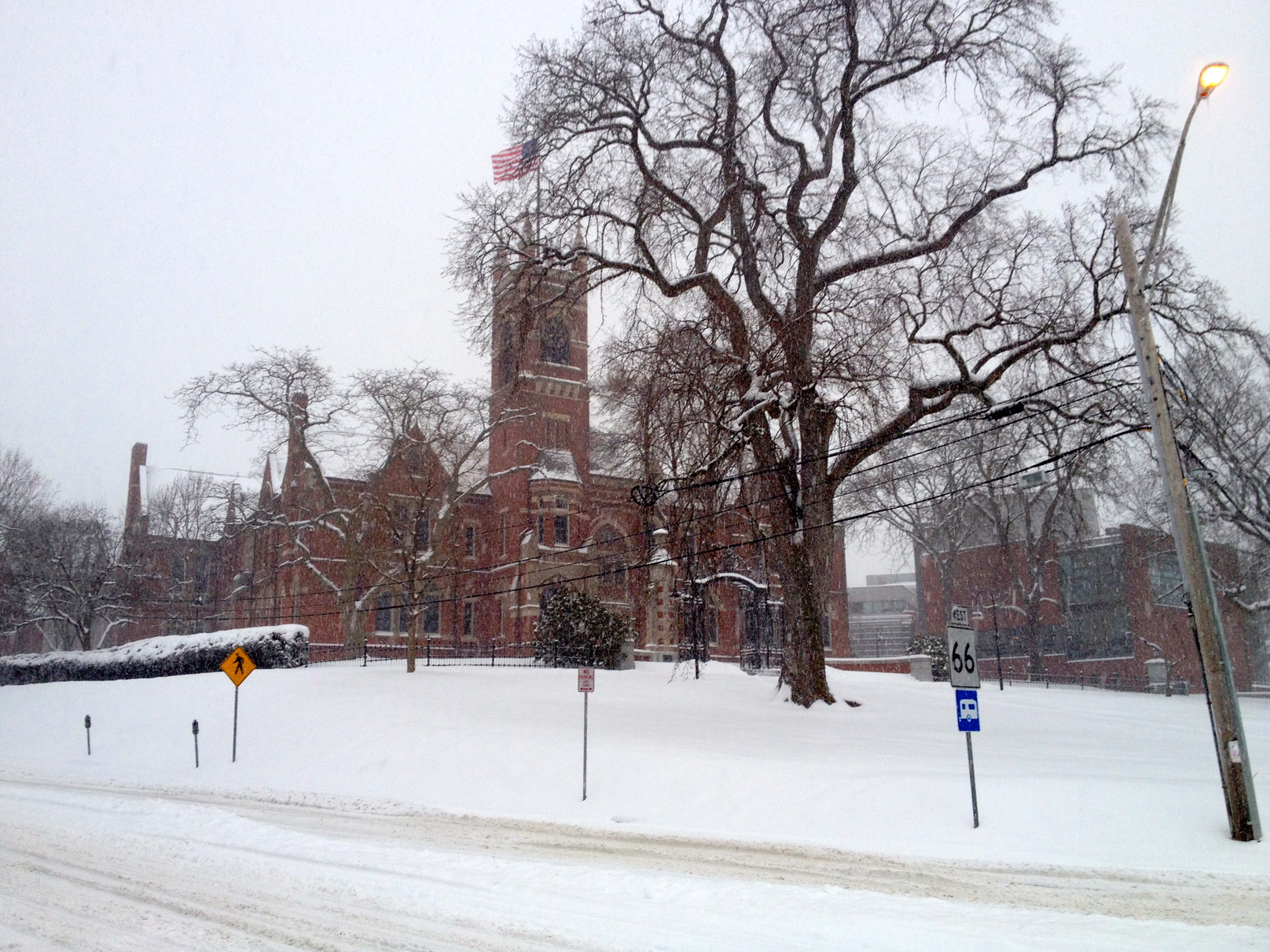Difference between revisions of "CSC111 Class Page 2014"
(→Links and Resources) |
|||
| Line 402: | Line 402: | ||
|} | |} | ||
| + | <br /> | ||
=Links and Resources= | =Links and Resources= | ||
| − | |||
<br /> | <br /> | ||
| − | + | ==On Line Python books== | |
<br /> | <br /> | ||
| − | |||
| − | |||
| − | |||
* [http://blogs.discovermagazine.com/cosmicvariance/2011/09/08/python/ disocovermagazine.com] blog. Check out the answers posted by many readers. They contain some interesting links that you may find useful! | * [http://blogs.discovermagazine.com/cosmicvariance/2011/09/08/python/ disocovermagazine.com] blog. Check out the answers posted by many readers. They contain some interesting links that you may find useful! | ||
| − | + | <br /> | |
==Python keywords== | ==Python keywords== | ||
| − | + | <br /> | |
;The list of all the reserved words of the Python language: | ;The list of all the reserved words of the Python language: | ||
:and del for is raise assert elif from lambda return break else global not try class except if or while continue exec import pass yield def finally in print | :and del for is raise assert elif from lambda return break else global not try class except if or while continue exec import pass yield def finally in print | ||
| Line 422: | Line 419: | ||
* [http://jeremy.zawodny.com/emacs/emacs-2.html A good Emacs tutorial] | * [http://jeremy.zawodny.com/emacs/emacs-2.html A good Emacs tutorial] | ||
* [[Emacs Quick Reference | Emacs Quick Reference]] | * [[Emacs Quick Reference | Emacs Quick Reference]] | ||
| − | + | <br /> | |
==Misc== | ==Misc== | ||
| + | <br /> | ||
* If you decide to work in pairs for the homework assignments, you need to follow the protocol for 'pair programming' as discussed in [http://maven.smith.edu/~jfrankli/111s08/pairProgramming2000.pdf this article]. | * If you decide to work in pairs for the homework assignments, you need to follow the protocol for 'pair programming' as discussed in [http://maven.smith.edu/~jfrankli/111s08/pairProgramming2000.pdf this article]. | ||
| Line 432: | Line 430: | ||
* a video of [http://www.youtube.com/watch?v=x2FimkptxIk digital horses]: what we can do with lists of objects! | * a video of [http://www.youtube.com/watch?v=x2FimkptxIk digital horses]: what we can do with lists of objects! | ||
| − | + | <br /> | |
==Software== | ==Software== | ||
| − | + | <br /> | |
* Installing and using the [http://www.smith.edu/its/tara/file_transfer/ssh_sftp.html#installing Secure Shell Client] on a Windows PC[http://cs.smith.edu/~thiebaut/classes/111/SecureShell/ .] | * Installing and using the [http://www.smith.edu/its/tara/file_transfer/ssh_sftp.html#installing Secure Shell Client] on a Windows PC[http://cs.smith.edu/~thiebaut/classes/111/SecureShell/ .] | ||
* Using [http://www.math.toronto.edu/admin/ssh.html SSH] on Windows, Linux, or on a Mac with OS X | * Using [http://www.math.toronto.edu/admin/ssh.html SSH] on Windows, Linux, or on a Mac with OS X | ||
| − | == | + | <br /> |
| + | =Class Videos= | ||
| + | <br /> | ||
| + | {| class="wikitable" | ||
| + | | | ||
| + | <center>[http://www.youtube.com/watch?v=YF9dxRkY4E8 http://img.youtube.com/vi/YF9dxRkY4E8/mqdefault.jpg]<br />[http://www.youtube.com/watch?v=YF9dxRkY4E8 <b>CSC111 For-Loop exercises -- Exercise #5</b>]<br /><br /></center> | ||
| + | | | ||
| + | <center>[http://www.youtube.com/watch?v=TNfI1tO70CE http://img.youtube.com/vi/TNfI1tO70CE/mqdefault.jpg]<br />[http://www.youtube.com/watch?v=TNfI1tO70CE <b>CSC111 For Loop Exercises -- Exercise #4</b>]<br /><br /></center> | ||
| + | |- | ||
| + | | | ||
| + | <center>[http://www.youtube.com/watch?v=1VXPBeYBiuo http://img.youtube.com/vi/1VXPBeYBiuo/mqdefault.jpg]<br />[http://www.youtube.com/watch?v=1VXPBeYBiuo <b>CSC111 For-Loop Exercises -- Exercise #3</b>]<br /><br /></center> | ||
| + | | | ||
| + | <center>[http://www.youtube.com/watch?v=y1dv69bSSwk http://img.youtube.com/vi/y1dv69bSSwk/mqdefault.jpg]<br />[http://www.youtube.com/watch?v=y1dv69bSSwk <b>CSC111 For-Loop Exercises -- Exercise #2</b>]<br /><br /></center> | ||
| + | |- | ||
| + | | | ||
| + | <center>[http://www.youtube.com/watch?v=_FZEwCOyQvA http://img.youtube.com/vi/_FZEwCOyQvA/mqdefault.jpg]<br />[http://www.youtube.com/watch?v=_FZEwCOyQvA <b>CSC111 For-Loop Exercises: Solution for Exercise #1</b>]<br /><br /></center> | ||
| + | | | ||
| + | <center>[http://www.youtube.com/watch?v=P1Myggumnso http://img.youtube.com/vi/P1Myggumnso/mqdefault.jpg]<br />[http://www.youtube.com/watch?v=P1Myggumnso <b>CSC111 -- Using PythonTutor</b>]<br /><br /></center> | ||
| + | |- | ||
| + | | | ||
| + | <center>[http://www.youtube.com/watch?v=ELRMtELi0zE http://img.youtube.com/vi/ELRMtELi0zE/mqdefault.jpg]<br />[http://www.youtube.com/watch?v=ELRMtELi0zE <b>Running Python Programs from the Command Line (Mac)</b>]<br /><br /></center> | ||
| + | | | ||
| + | <center>[http://www.youtube.com/watch?v=6x2qtLrQdqU http://img.youtube.com/vi/6x2qtLrQdqU/mqdefault.jpg]<br />[http://www.youtube.com/watch?v=6x2qtLrQdqU <b>Python on the command line in Windows</b>]<br /><br /></center> | ||
| + | |- | ||
| + | | | ||
| + | <center>[http://www.youtube.com/watch?v=1FomulmEjuk http://img.youtube.com/vi/1FomulmEjuk/mqdefault.jpg]<br />[http://www.youtube.com/watch?v=1FomulmEjuk <b>CSC111 Intro to Lab 3</b>]<br /><br /></center> | ||
| + | | | ||
| + | <center>[http://www.youtube.com/watch?v=TU2zzMM7v4A http://img.youtube.com/vi/TU2zzMM7v4A/mqdefault.jpg]<br />[http://www.youtube.com/watch?v=TU2zzMM7v4A <b>CSC111 Notes on Homework 1 2014</b>]<br /><br /></center> | ||
| + | |- | ||
| + | | | ||
| + | <center>[http://www.youtube.com/watch?v=OCRvN0NJlHg http://img.youtube.com/vi/OCRvN0NJlHg/mqdefault.jpg]<br />[http://www.youtube.com/watch?v=OCRvN0NJlHg <b>Comments for CSC111 TAs on Homework 1</b>]<br /><br /></center> | ||
| + | | | ||
| + | <center>[http://www.youtube.com/watch?v=haqpipMxq_c http://img.youtube.com/vi/haqpipMxq_c/mqdefault.jpg]<br />[http://www.youtube.com/watch?v=haqpipMxq_c <b>Qt5 Tutorial: Adding a Debugging Window to your Application</b>]<br /><br /></center> | ||
| + | |- | ||
| + | | | ||
| + | <center>[http://www.youtube.com/watch?v=qwEDoAGB3NE http://img.youtube.com/vi/qwEDoAGB3NE/mqdefault.jpg]<br />[http://www.youtube.com/watch?v=qwEDoAGB3NE <b>CSC111 Comments on Homework 2</b>]<br /><br /></center> | ||
| + | | | ||
| + | <center>[http://www.youtube.com/watch?v=1_aF6o6t-J4 http://img.youtube.com/vi/1_aF6o6t-J4/mqdefault.jpg]<br />[http://www.youtube.com/watch?v=1_aF6o6t-J4 <b>Qt5 Tutorial: Building a simple Console application</b>]<br /><br /></center> | ||
| + | |- | ||
| + | | | ||
| + | <center>[http://www.youtube.com/watch?v=1ILvH24PYHg http://img.youtube.com/vi/1ILvH24PYHg/mqdefault.jpg]<br />[http://www.youtube.com/watch?v=1ILvH24PYHg <b>Qt5 Tutorial: A 3-Widget Application</b>]<br /><br /></center> | ||
| + | | | ||
| + | <center>[http://www.youtube.com/watch?v=TgZxW6w6w8c http://img.youtube.com/vi/TgZxW6w6w8c/mqdefault.jpg]<br />[http://www.youtube.com/watch?v=TgZxW6w6w8c <b>CSC111 Comments on Lab #1</b>]<br /><br /></center> | ||
| + | |- | ||
| + | | | ||
| + | <center>[http://www.youtube.com/watch?v=bjVO2MZroUU http://img.youtube.com/vi/bjVO2MZroUU/mqdefault.jpg]<br />[http://www.youtube.com/watch?v=bjVO2MZroUU <b>CSC111 Spring 2014: Finding the Class Web Page</b>]<br /><br /></center> | ||
| + | | | ||
| + | <center>[http://www.youtube.com/watch?v=H8LDfJhOQoA http://img.youtube.com/vi/H8LDfJhOQoA/mqdefault.jpg]<br />[http://www.youtube.com/watch?v=H8LDfJhOQoA <b>2D Packing of rectangles with 1 Thread</b>]<br /><br /></center> | ||
| + | |- | ||
| + | | | ||
| + | <center>[http://www.youtube.com/watch?v=vKiCq6dEyrI http://img.youtube.com/vi/vKiCq6dEyrI/mqdefault.jpg]<br />[http://www.youtube.com/watch?v=vKiCq6dEyrI <b>2D multithreaded packing of rectangles.</b>]<br /><br /></center> | ||
| + | | | ||
| + | <center>[http://www.youtube.com/watch?v=dIjJHexzPSI http://img.youtube.com/vi/dIjJHexzPSI/mqdefault.jpg]<br />[http://www.youtube.com/watch?v=dIjJHexzPSI <b>2D multithreaded packing of rectangles with pre-placed items.</b>]<br /><br /></center> | ||
| + | |- | ||
| + | |} | ||
| − | |||
<br> | <br> | ||
<br> | <br> | ||
Revision as of 17:01, 1 March 2014
--D. Thiebaut (talk) 09:58, 7 January 2014 (EST)
Contents
Prof and TAs
|
Dominique Thiébaut email |
|
To see when and where TAs are available this week, click here.
Weekly Schedule
First Half
| Week | Topics | Reading |
| Week 1 1/27 |
x = 3 name = "hello"
|
|
| Week 2 2/3 |
|
|
| Week 3 2/10 |
|
|
| Week 4 2/17 |
(advance the movie to 7 minutes and 10 seconds)
|
|
| Week 5 2/24 |
file = pickAFile()
sound = makeSound( file )
blockingPlay( sound )
|
|
| Week 6 3/3 |
|
|
| Week 7 3/10 |
|
|
Spring Break
Second Half
| Week | Topics | Reading |
| Week 9 3/24 |
|
|
| Week 10 3/31 |
|
|
| Week 11 4/7 |
|
|
| Week 12 4/14 |
|
|
| Week 13 4/21 |
|
|
| Week 14 4/28 |
|
|
Links and Resources
On Line Python books
- disocovermagazine.com blog. Check out the answers posted by many readers. They contain some interesting links that you may find useful!
Python keywords
- The list of all the reserved words of the Python language
- and del for is raise assert elif from lambda return break else global not try class except if or while continue exec import pass yield def finally in print
Linux
- Getting Started with Linux (from U. North Carolina, Chapel Hill)
- Intermediate Linux (from U. North Carolina, Chapel Hill)
- A good Emacs tutorial
- Emacs Quick Reference
Misc
- If you decide to work in pairs for the homework assignments, you need to follow the protocol for 'pair programming' as discussed in this article.
- Video talks on Python:
- All the programs of Zelle's Python textbook
- a video of digital horses: what we can do with lists of objects!
Software
- Installing and using the Secure Shell Client on a Windows PC.
- Using SSH on Windows, Linux, or on a Mac with OS X
Class Videos
Back To Main Page




